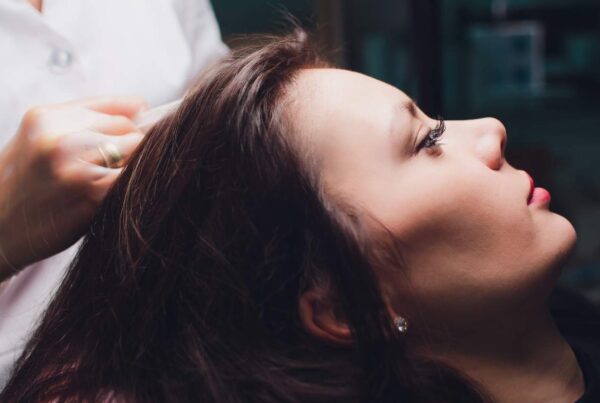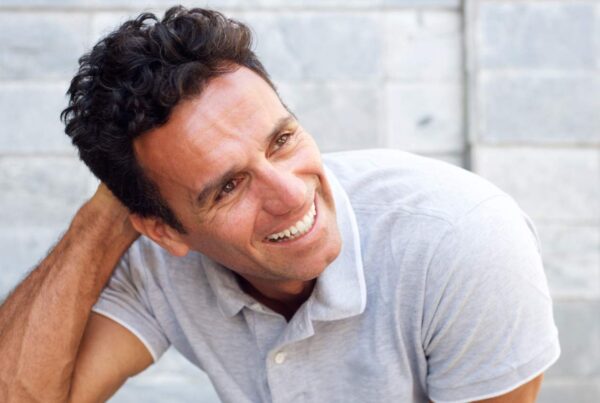Who Will Need A Hair Transplant?
Hair loss, scientifically termed alopecia, affects nearly 25% of all men. As men age, that statistic tends to rise. After the age of 65, over 30% of men will experience balding. (For more information see our article, How Common Is Hair Loss?)
But it isn’t just men who experience balding, women are also prone to alopecia, and it’s frustrating toll on head and body hair. Roughly 2% of women will experience balding. Though that number is much lower than their male counterparts, it remains a frustrating, troubling condition.
Balding is a medical issue that affects men and women well beyond vanity. At least 37% of people who experience balding also suffer anxiety over their hair loss.
The good news is that innovative and sophisticated surgical techniques can vastly improve hair loss, thereby relieving anxiety and depression related to the condition. A surgical procedure consists of grafting hair follicles on parts of the head where balding is most prominent. But hair transplants aren’t an uncomplicated undertaking for anyone interested. Many people have a wealth of questions (as they should) regarding the procedure and all its details.
- How many sessions do you need?
- How many hair transplants do I need?
- How many grafts can be performed?
- How many hair transplants are possible to perform?
- How many hair transplants can one do in one’s life?
How Many Hair Transplants Do I Need?
In general only a single hair transplant is typically necessary to regain dense voluminous hair for the remainder of ones life. In certain unique cases, more than one operation or touch up may be needed.
When it comes to hair graft procedures, the real question isn’t how many procedures, instead, how many grafts are possible in total. Over a person’s life, it is possible to implant a maximum of about 6,000 to 7,000 grafts. Your surgeon will anticipate future surgical interventions when he/she performs the original grafts.
One example might be a male in his late 20s. It’s possible that given time following the original grafting procedure that he will lose more hair in a different region of his head. Hair loss patterns evolve with age, so it’s not untypical to experience alopecia progression. This is why a patient must continue to take care of their hair following the original procedure.
Competent surgeons intelligently anticipate alopecia’s progression when they perform the first procedure. In such cases, the surgeon may graft areas that “may” bald.
Distribution of Grafts
How a surgeon distributes grafts has a significant impact on the success of the hair transplant. The surgeon must understand what areas need grafting. Not all areas of the head require the same surgical focus. Some areas may require more substantial intervention, while others won’t.
Additionally, grafts should be randomly distributed as a way to create a natural-looking head of hair. A skilled surgeon will emphasize the front of the head over the back. The goal for the patient is a thicker looking head of hair that’s aligned with the natural hairline.
How many hair transplants yield a natural, dense appearance?
Most of the time, a single graft results in the increased hair density the patient desires. If a patient has an aggressive balding pattern, a follow-up procedure might be needed. A patient would wait at least a few months before a follow-up procedure to allow the first operation to heal.
How many hair grafts do I need to correct baldness?
Surgeons rely on the Norwood Hamilton Scale, which lists several stages of baldness. Leveraging this scale allows the surgeon the ability to estimate the number of grafts needed for the original procedure.
The number of necessary procedures strongly depends on the patient’s balding pattern aggressiveness.
In one session, how many hair grafts can be transplanted?
In a single session, up to 4,000 grafts might be performed by the surgeon. That amounts to around 6,000 hairs. Such limitations are set as a way to allow the original grafts to heal. According to Starks medical professionals, only 20 to 25% of follicular units in the Hippocratic Zone should be taken. Samples greater than 4,000 grafts tend to leave an area too thin, which results in lackluster results.
Less aggressive balding patterns tend to require fewer grafts, sometimes as low as 1,000.
Once grafted, does the hair last for life, or can it fall out after a few years?
Grafted hair is unlikely to fall out. Because grafted hair originates from the back of the Hippocratic crown, that hair is genetically programmed to remain healthy for life. Even following a transplant, the hair retains its genetic coding.
Intervention: What To Know
During your first appointment at Starks, the surgeon who will take care of the transplant of your hair will explain how the operation takes place. He will explain the intervention itself, but also the care you need to adopt after the operation and the different techniques available to you.
Your first appointment with a Starks medical professional will be a time, whereas you gain a full understanding of what you can expect from a hair graft procedure. Your surgeon will explain post-surgery hair care, as well, that will help assure the absolute best possible results.
Hair implantation Process
Our skulls are divided into two prominent parts:
- The Hippocratic Crown – This area extends from the temples to the nape of the neck. This hair never falls out.
- The Top of the Skull – This hair grows in cyclical phases and tends to be prone to falling out. The rate of top skull hair loss is around 31%.
During the operation, all hair is implanted per individual follicular unit. A follicular unit equals up the four bulbs of hair. The average follicular unit is 2.2 hairs.
The transplant consists of taking follicular units from the Hippocratic Crown (sometimes called the donor zone) and placing them in the balding area.
The procedure is done while the patient is under local anesthesia. Due to this, the patient will feel nothing.
Hair transplant success rates remain at an impressive 100%.
What are the Different Types of Hair Transplant Procedures?
Today, there are two main hair transplant techniques.
When it comes to extensive baldness, FUT is a favored, preferred technique. During FUT, a strip is removed from the neck and replaced in a balding area. This allows the surgeon to attend to more egregious cases of balding in shorter order. The downside is that the procedure typically leaves behind a pronounced scar.
The more modern approach is called FUE (Follicular Unit Extraction). Many patients prefer FUE because it leaves no scar. During FUE, the surgeon works in follicular units. The procedure is more tedious, but yields a high success rate and is often preferred for vanity reasons.
As a note, it’s important to remember that the patient and donor must be one and the same. In other words, a surgeon can’t take follicular units from another person and use them on the patient.
What is the Duration of the Hair Transplant Procedure?
Regarding the intervention, it should be known that it can last between 2h and 7h, depending on the technique used and the number of grafts to transplant.
Hair transplant procedures can last between two and seven hours, depending on the number of grafts needed.
How Much Does A Hair Transplant Cost?
- For a FUT hair transplant procedure expect a cost of 4000 to 6000 euros.
- For a FUE hair transplant procedure expect a cost between 3000 and 5000 euros.
In conclusion, hair transplants are nearly 100% successful. Most of the time, one operation is all that is needed; however, in more egregious alopecia cases, a follow-up procedure may be needed.
If you are showing symptoms of alopecia, don’t wait to take action. The sooner you seek help, the higher your success rate becomes.
If you want more information about hair transplantation, do not hesitate to contact Starks, a clinic specializing in FUE transplant.
Thank you for checking out this post. Starks currently provides age management solutions from clinics located in France, Greece, and Italy. Please click below to find out more about the hair restoration services we offer to our global clientele:
France:
Greffe De Cheveux
Italy:
Trapianto Di Capelli
Greece:
Μεταμόσχευση μαλλιών




